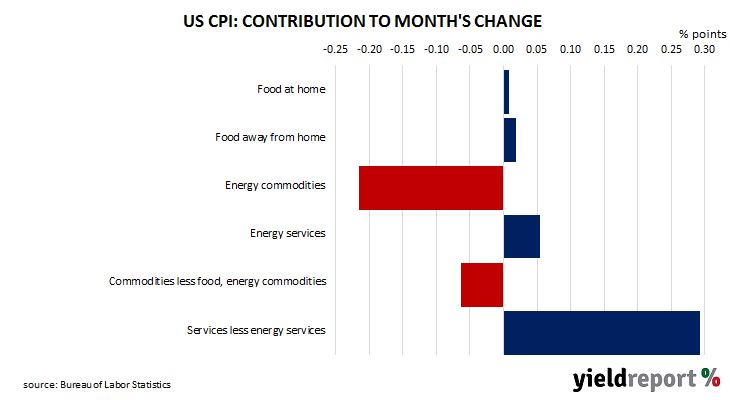Summary: US CPI up 0.1% in November, above expectations; “core” rate up 0.3%; ANZ: core inflation running at 4.0%, twice FOMC’s target; short-term Treasury yields creep higher, longer-term yields decrease; rate-cut expectations soften slightly; ANZ: services inflation ex-shelter still looks “punchy”; prices of non-energy services main driver.
The annual rate of US inflation as measured by changes in the consumer price index (CPI) halved from nearly 3% in the period from July 2018 to February 2019. It then fluctuated in a range from 1.5% to 2.0% through 2019 before rising above 2.0% in the final months of that year. Substantially lower rates were reported from March 2020 to May 2020 and they remained below 2% until March 2021. Rates then rose significantly before declining from mid-2022.
The latest US CPI figures released by the Bureau of Labor Statistics indicated seasonally-adjusted consumer prices rose by 0.1% on average in November. The increase was above expectations of no change as well as October’s flat result. On a 12-month basis, the inflation rate slowed from 3.2% to 3.1%.
“Headline” inflation is known to be volatile and so references are often made to “core” inflation for analytical purposes. The core prices index, the index which excludes the more variable food and energy components, increased by 0.3% on a seasonally-adjusted basis over the month, in line with expectation. The annual growth rate remained steady at 4.0%.
“Core CPI inflation is running at 4.0%, twice the FOMC’s target,” said ANZ senior economist Adelaide Timbrell.
Short-term US Treasury bond yields crept higher while longer-term yields decreased on the day. By the close of business, the 2-year Treasury yield had inched up 1bp to 4.73%, the 10-year yield had lost 4bps to 4.20% while the 30-year yield finished 2bps lower at 4.31%.
In terms of US Fed policy, expectations of a lower federal funds rate in the next 12 months softened slightly. At the close of business, contracts implied the effective federal funds rate would average 5.33% in December, in line with the current spot rate, 5.335% in January and 5.29% in March. December 2024 contracts implied 4.325%, 100bps less than the current rate.
“Rents were the biggest contributor to the growth in core inflation,” Timbrell added. “Services inflation ex-shelter still looks punchy and it also carries a bigger weight in the Federal Reserve’s preferred inflation measure than it does in the CPI. A marked softening in core inflation is needed before the Fed will be in a position to cut rates.”
The largest influence on headline results is often the change in fuel prices. Prices of “Energy commodities”, the segment which contains vehicle fuels, decreased by 5.8% and contributed -0.22 percentage points to the total. However, prices of non-energy services, the segment which includes actual and implied rents, had the largest effect on the total, adding 0.29 percentage points after increasing by 0.5% on average.



